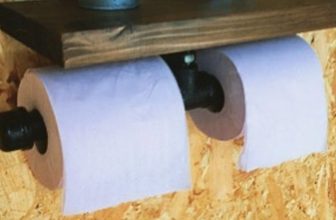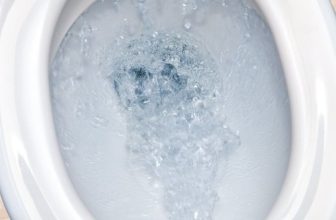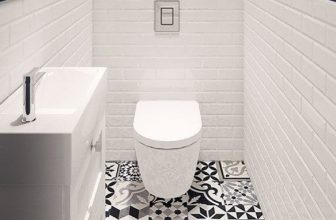Toilet Fill Valve Types – Complete Review
The toilet fill valve is an essential part of a toilet, responsible for filling up the toilet tank with water. It is also known as a ballcock or toilet float valve. The fill valve is activated when the float Ball rises to a certain level, which triggers the filling process.
Fill valves come in different sizes and styles, and they can be made from different materials such as plastic, brass, or stainless steel.
Most homes have a toilet with a fill valve that controls the amount of water that goes into the bowl. There are different types of fill valves, but the most common ones are the plunger/piston type, the diaphragm type, and the float cup type.
The plunger/piston type fill valve is operated by a handle that is attached to a plunger or piston. This type of valve is usually found in older homes.
The diaphragm type fill valve has a brass or plastic diaphragm that is located inside the valve body. The diaphragm is connected to a lever that is operated by a handle. The toilet fill valve diagram is often used in newer homes.
The float cup type fill valve uses a float that rests on top of the water in the tank. The float is connected to a lever that controls the water level. This type of valve is often used in newer homes.
The float-less type fill valve does not use a float. Instead, it uses a sensor to detect the water level. This type of valve is often used in newer homes.
This article will tell you about different types of toilet fill valves and their pros and cons.
What is a Fill Valve?
A fill valve controls the flow of water into a toilet tank. Water fill valves are located in the tank portion of a toilet and are attached to the float mechanism. When the float begins to drop in the tank, the fill valve is activated and water starts to flow into the tank.
Once the water reaches its predetermined full level, the fill valve closes and stops the flow of water into the toilet tank.
A fill valve is a vital component of any toilet, and over time it can become worn or out of alignment. This can cause a leak, and wear on the valve’s components and parts. If your fill valve is causing problems, it is important to have it repaired or replaced as soon as possible.
Different Types of Toilet Fill Valves
There are five different toilet flush valve types available on the market, each with its own advantages and disadvantages. We will consider each of them in detail.
Plunger/piston type fill valve
The plunger/piston type fill valve is a type of toilet tank fill valve that uses a floating ball attached to a pivoting lever in order to open and close a plunger stem that is fitted against a water inlet port.
This type of ballcock is designed with a hinged lever assembly above the ballcock, which often uses thumbscrews at some hinged joints in order to allow adjustment of the lever arm movement.
This style of fill valve is among the earliest styles of toilet tank fill valve designs and is made of a heavy-duty cast brass body that provides quiet operation.
Diaphragm type fill valve with plastic body
The plastic body construction is what you will find on most newer models of anti-siphon diaphragm valves, and is probably what you will buy if you decide to replace the ball valve type with another ball valve. Take note that this all-plastic type is still considered a true ball valve because it uses a float ball in its working mechanism.
One advantage of a plastic body diaphragm fill valve is that they are often less expensive than the brass models. They are also more corrosion resistant and lighter weight, making them easier to handle during installation.
The main disadvantage of a plastic body valve is that they are not as durable as the brass models and are more likely to break or crack if they are dropped or mishandled. Also, over time, the plastic components can deteriorate, especially if they are exposed to sunlight or chemicals.
Diaphragm type fill valve with brass body
This type of ballcock is typically used in older homes, as it is more durable than the modern plastic models. The button that actuates the diaphragm is plastic, but the rest of the ballcock is made of brass, which makes it more durable.
Float cup type fill valve
A float cup type fill valve is a plastic valve that is attached to the float cup with a metal spring. The float cup rests on the water in the tank and seals off the opening to the fill valve.
The water level in the tank is controlled by the float cup. When the water level in the tank drops, the float cup lowers and allows water to enter the tank. The float cup then rises as the water level in the tank rises.
Float-less type fill valve
The floatless type fill valve uses a diaphragm pressure-sensing mechanism to control the inlet valve. This valve does not use a floating device, which can become clogged or otherwise cause problems.
The floatless type fill valve is made of plastic, which is more durable and reliable than other types of valves.
When to replace a toilet valve?
If you notice your toilet fill valve is making an unusual noise, generating annoying sounds, or providing weak flushes, it may be time to replace it. A faulty valve can also cause your toilet to take a long time to refill.
Generally, a toilet valve lasts for about 5 years. However, if you don’t do routine maintenance on your toilet, it may start having problems sooner.
Replacing the toilet valve is a fairly simple matter. If you notice any of the above problems, don’t wait to replace your toilet fill valve.
How to Choose a Toilet Fill Valve?
There are several factors to consider when choosing a toilet fill valve, including quality, compatibility, installation, and longevity.
Quality should always be the first consideration, and you should be willing to pay a little extra for a fill valve that is well-made and will last for many years. Reputable brands and fill valves with good online reviews are good indicators of quality.
Compatibility is another important consideration, as you want to make sure the fill valve you choose will work with your specific toilet. Most fill valves are compatible with both one and two-piece toilets, and some can even be used as a single or dual flush.
Installation is usually straightforward, but some fill valves may be easier to install than others. If you are not comfortable with plumbing, it might be best to hire a professional.
Finally, choose a fill valve that is durable and will last for many years. Proper care and maintenance will help extend the life of your fill valve, but some materials are simply more durable than others.
FAQ
How do I know which toilet flush valve I need?
Are you having trouble finding a replacement fill valve for your toilet? Here is a quick guide to help you determine which type you need:
- if your toilet was manufactured before 1994, it likely has a ballcock fill valve. This type of valve has a float ball that rises and falls with the water level in the tank. As the water level drops, the float ball allows more water to enter the tank;
- if your toilet was manufactured after 1994, it likely has a piston-type fill valve. This type of valve has a floating ball that is connected to a rod. As the water level drops, the floating ball moves down the rod and allows more water to enter the tank.
If you are not sure which type of fill valve your toilet has, you can remove the old valve and take it to a local hardware store for assistance.
What are the differences between the types of fill valves?
Each type of fill valve has its own advantages and disadvantages. For example, the ballcock fill valve is the most common type of fill valve, but it can be difficult to adjust.
The diaphragm fill valve is easier to adjust, but it can be more expensive.
The piston fill valve is the most expensive type of fill valve, but it is the easiest to adjust.
The float cup fill valve is the least expensive type of fill valve, but it can be more difficult to adjust.
What is the size of the fill valve?
The size of the fill valve is determined by the size of the tank. The standard size is 2 inches, but you may find a 1.6-inch valve on some models.
How to choose a quiet fill flush valve?
If noise reduction is your top priority, look for a fill flush valve with a quiet-close feature. This will help to mute the sound of the valve as it closes, making it much more tolerable for anyone who is sensitive to noise.
Bottom Line
The most common toilet float types you may find in your home include plunger or piston type fill valves, diaphragm type fill valves, float cup type fill valves, and float-less type fill valves.
Each type of fill valve has its own advantages and disadvantages, so it is important to choose the right type of fill valve for your needs.
Fill valves are an essential part of any toilet, and they must be maintained and repaired regularly to ensure that the toilet works properly.
What type of fill valve does your toilet tank have? Share your answer in the comments.



